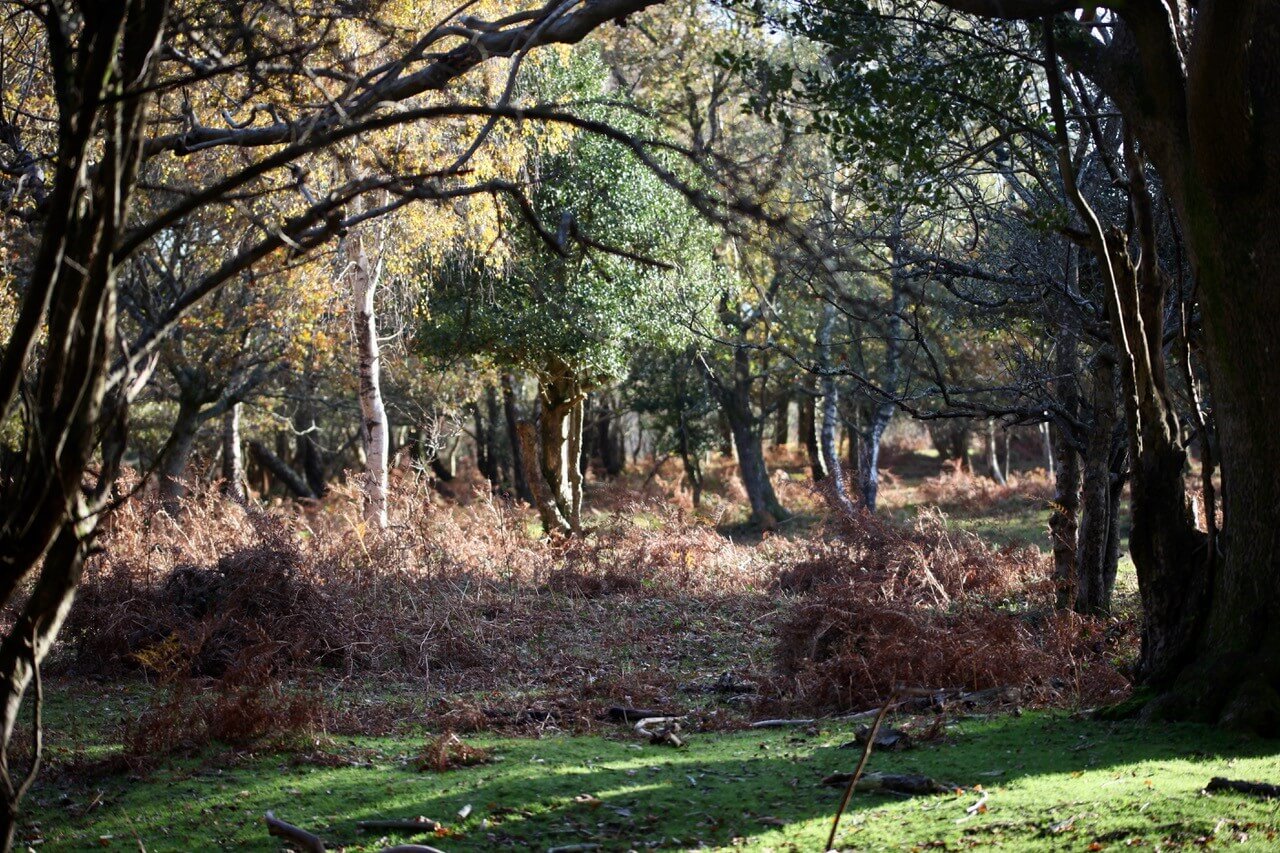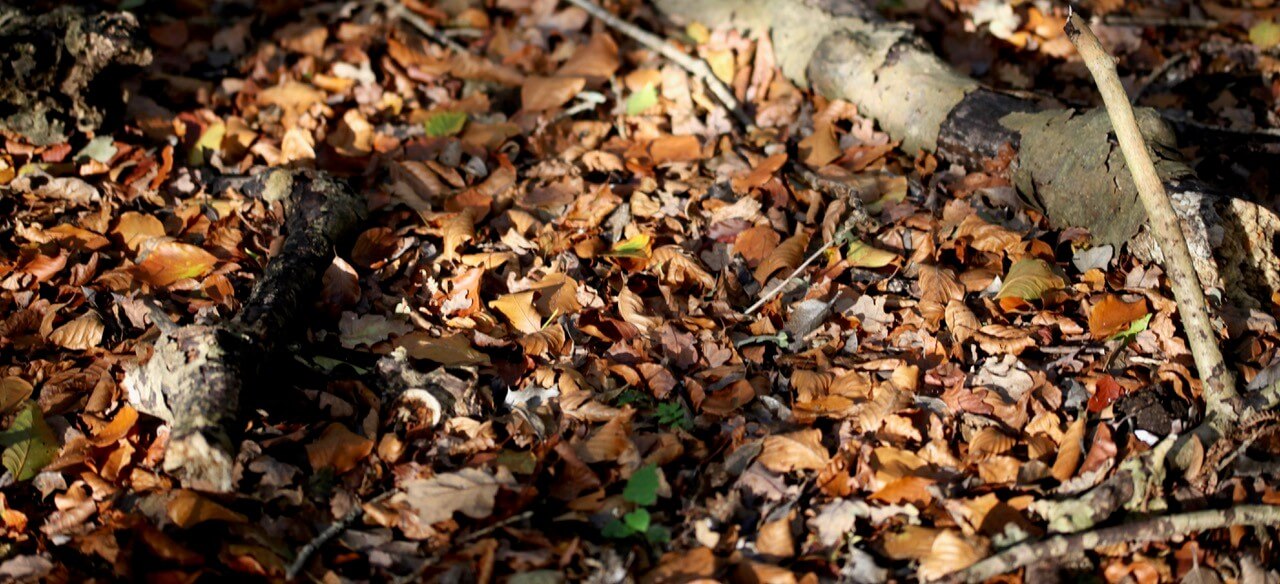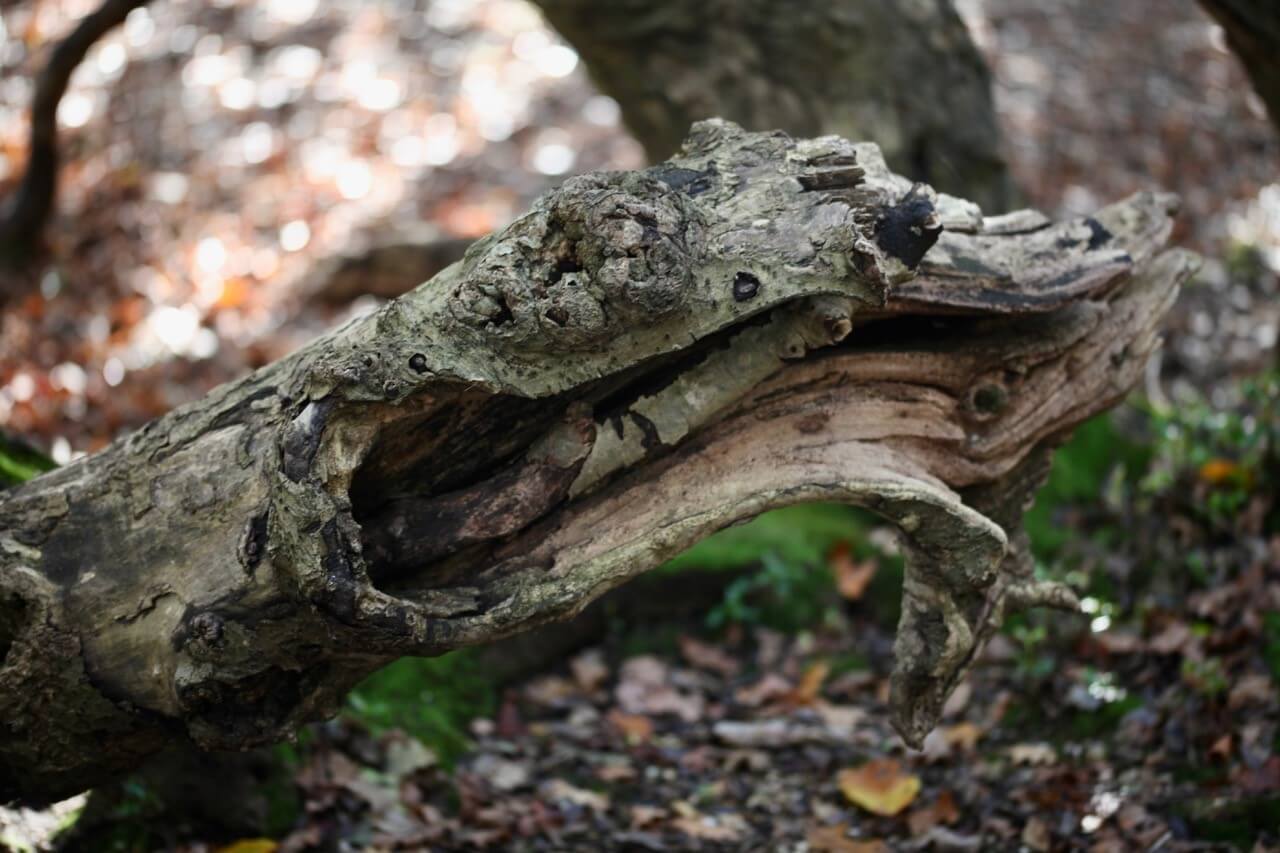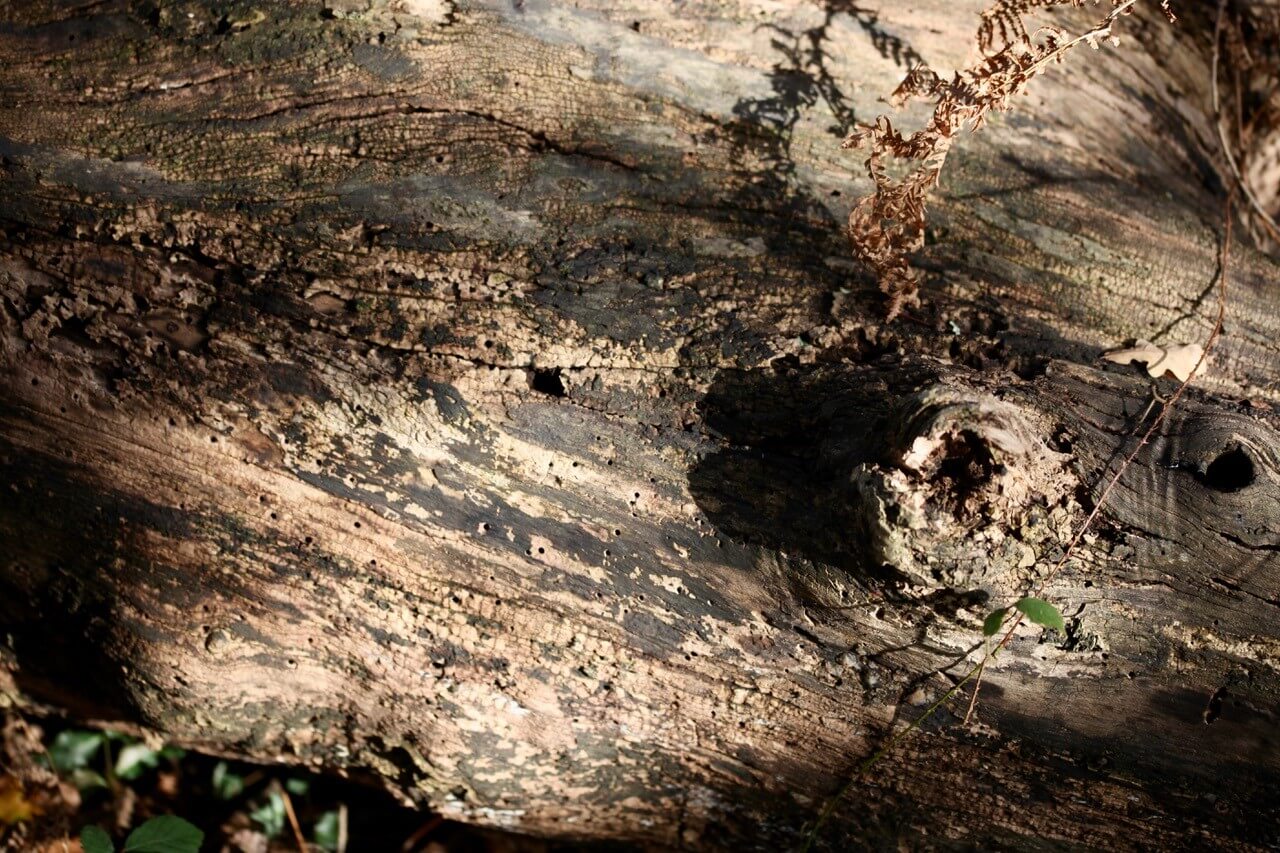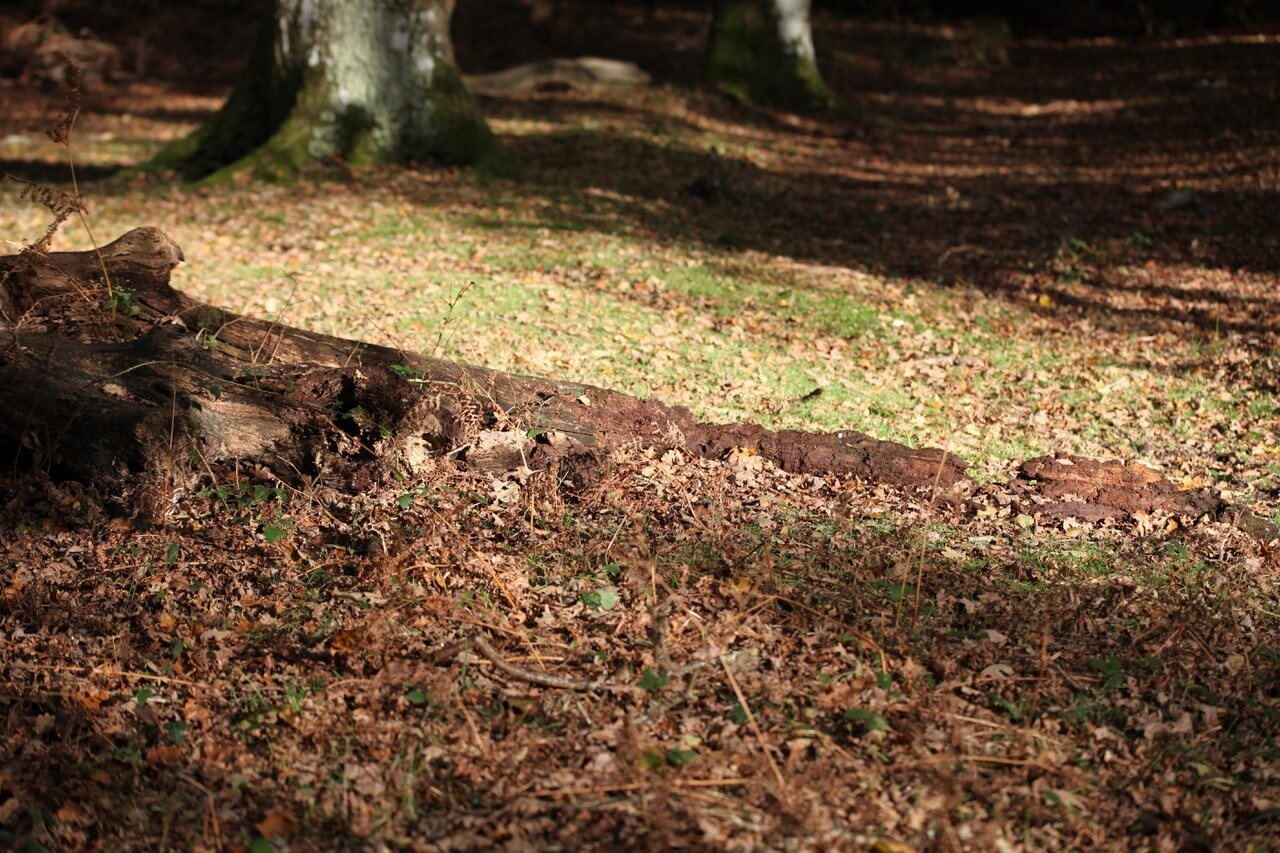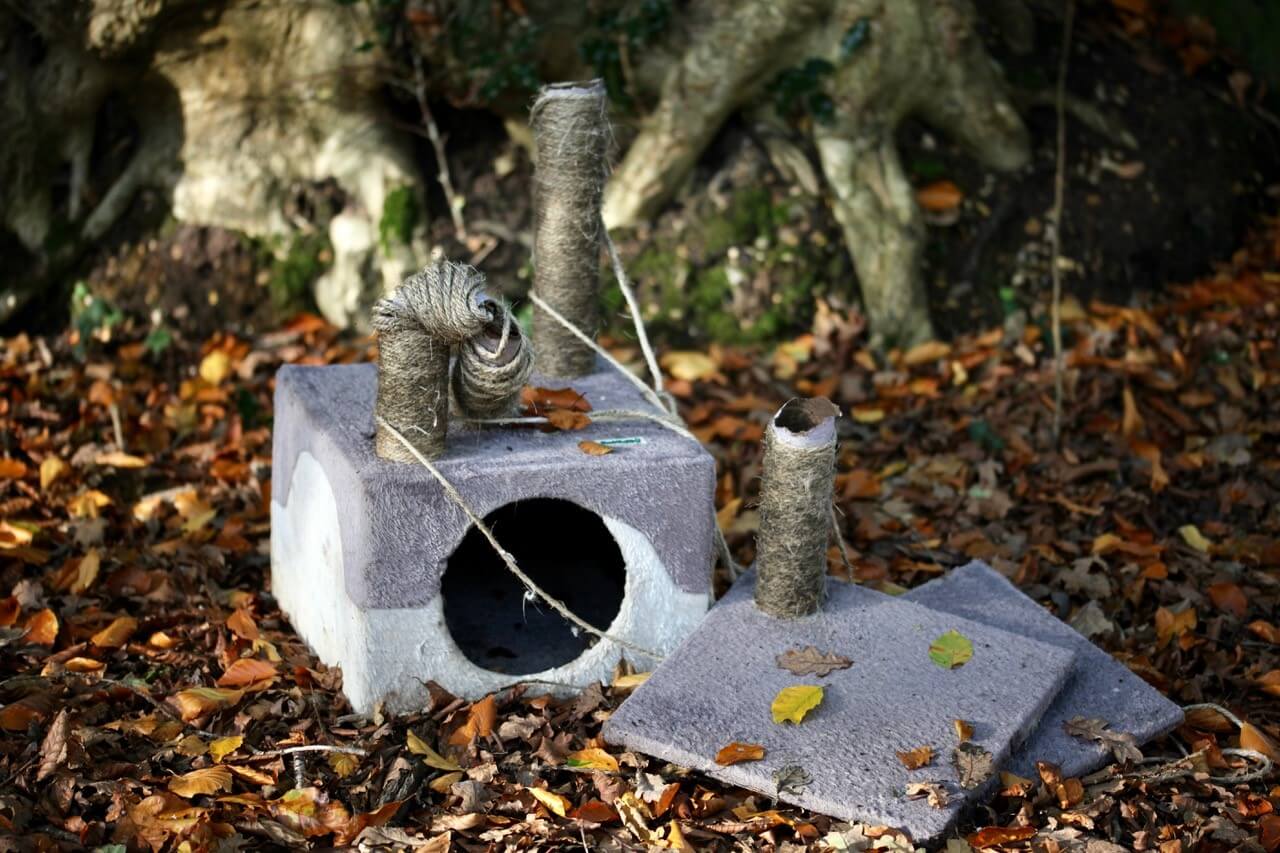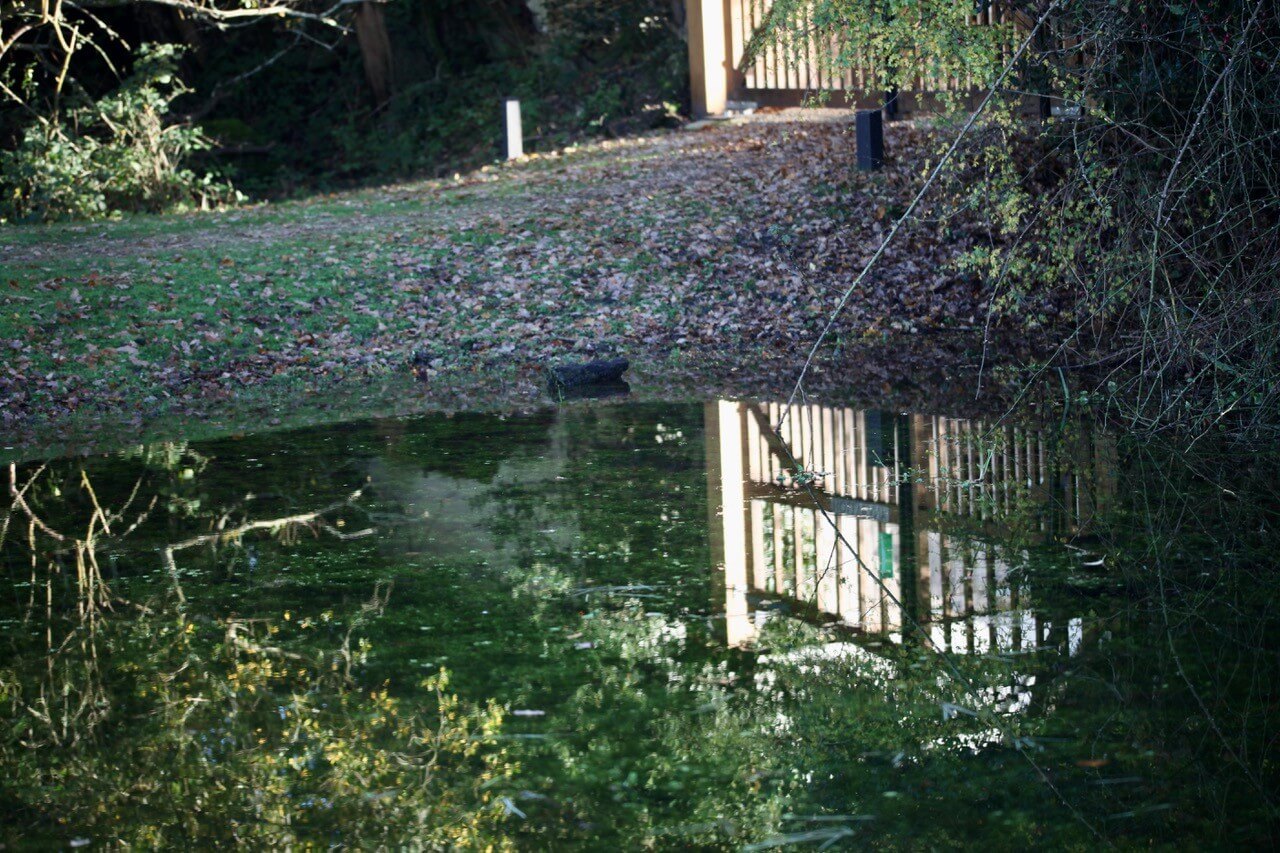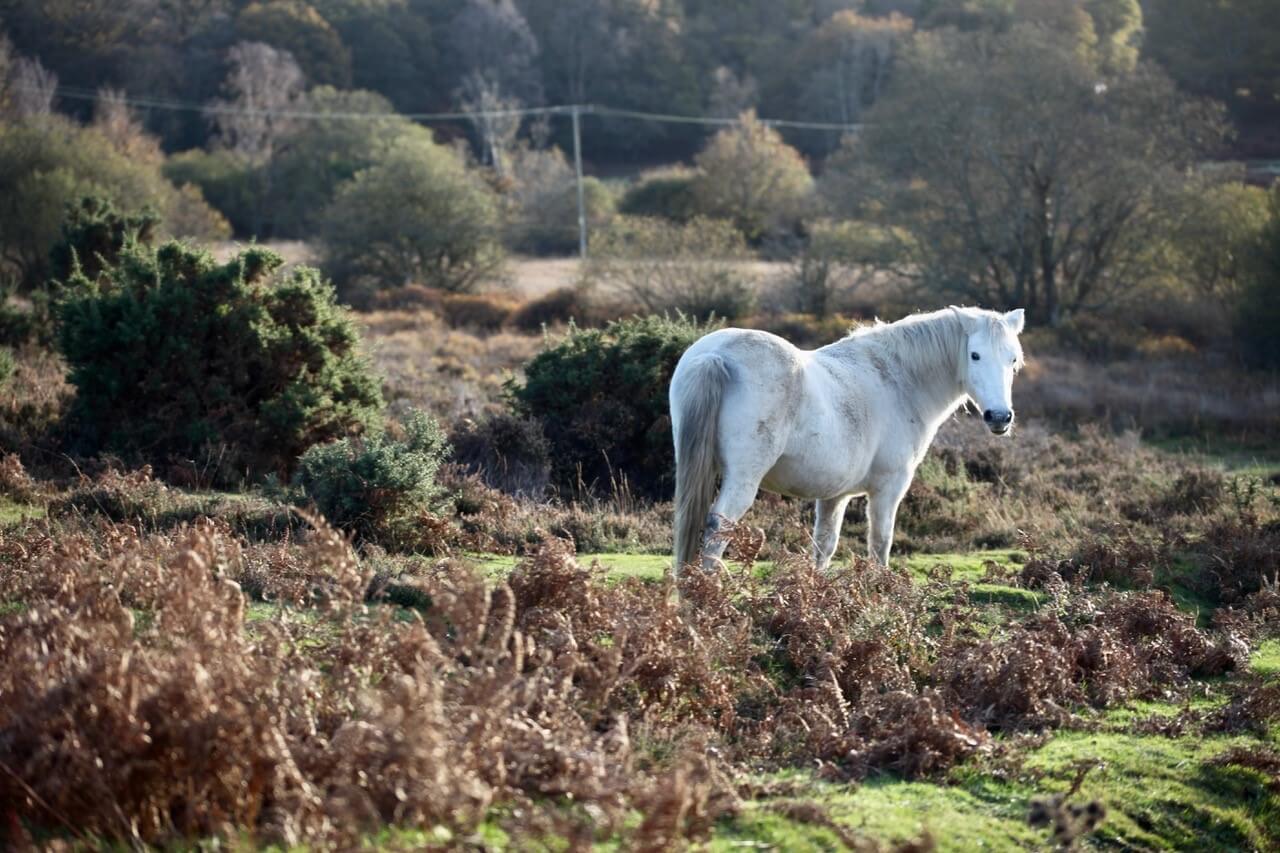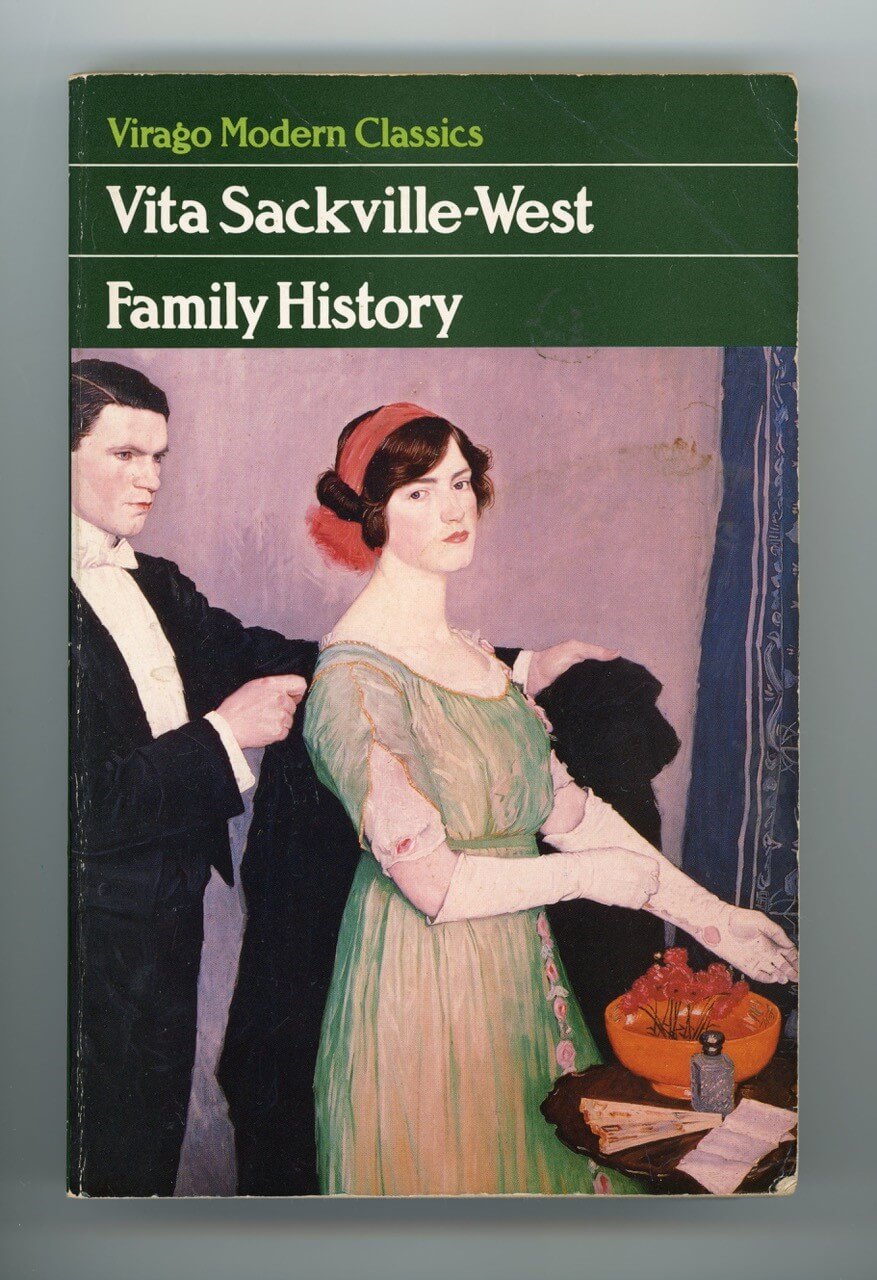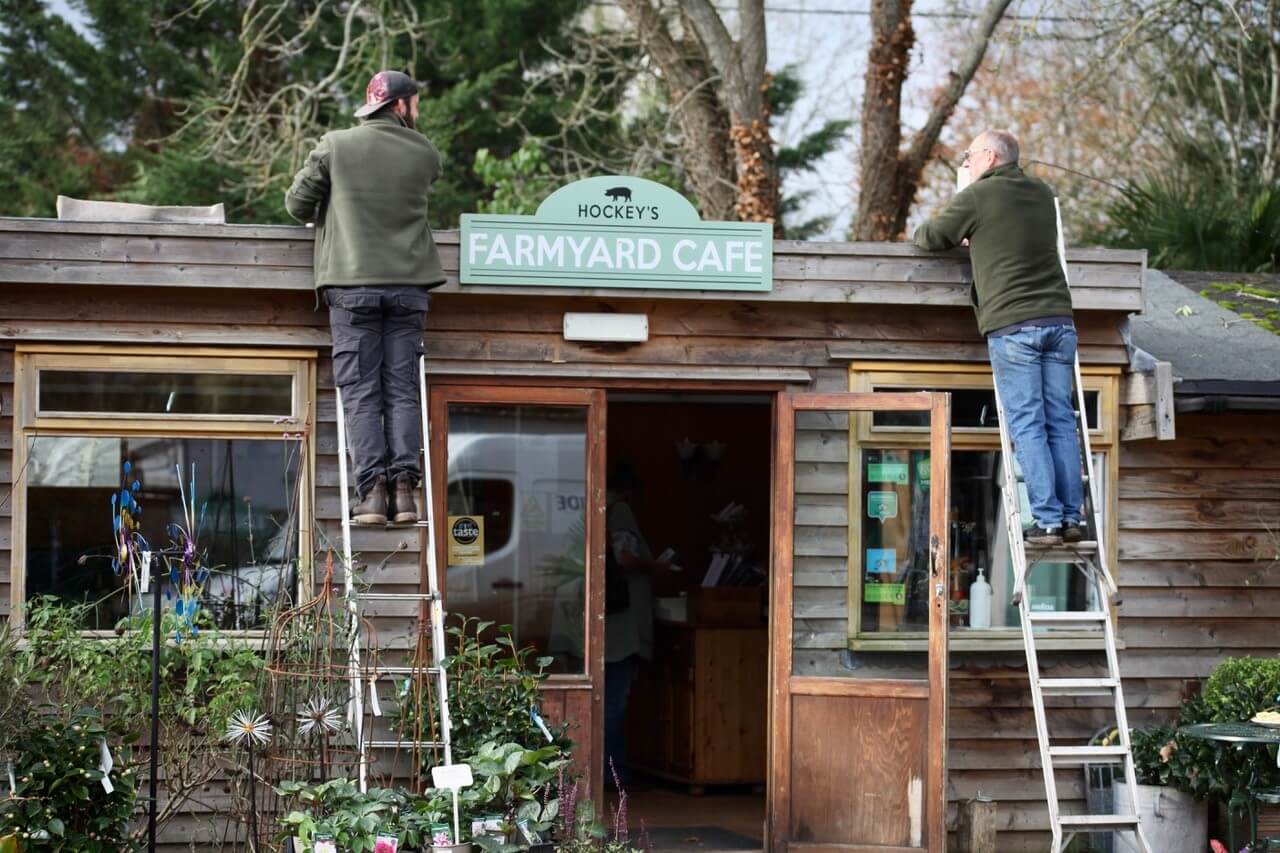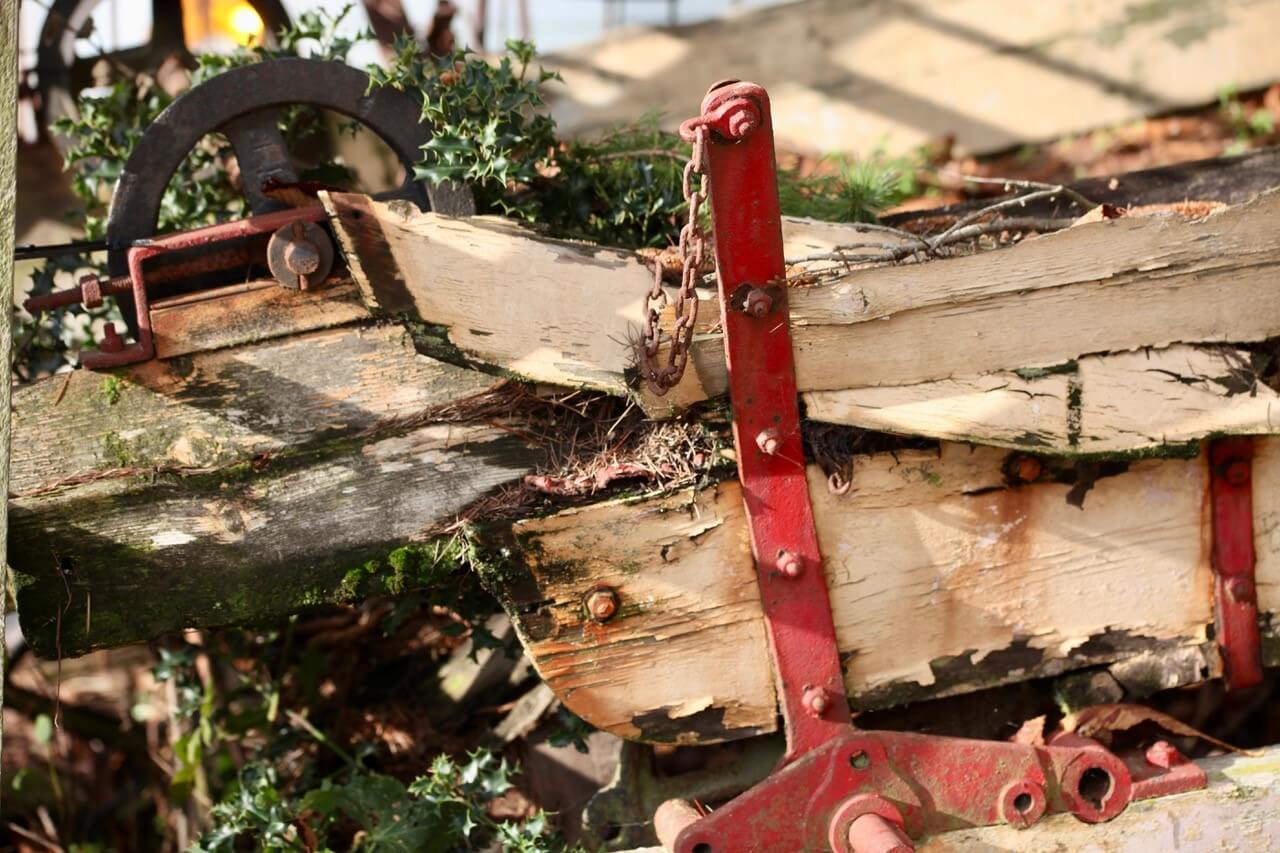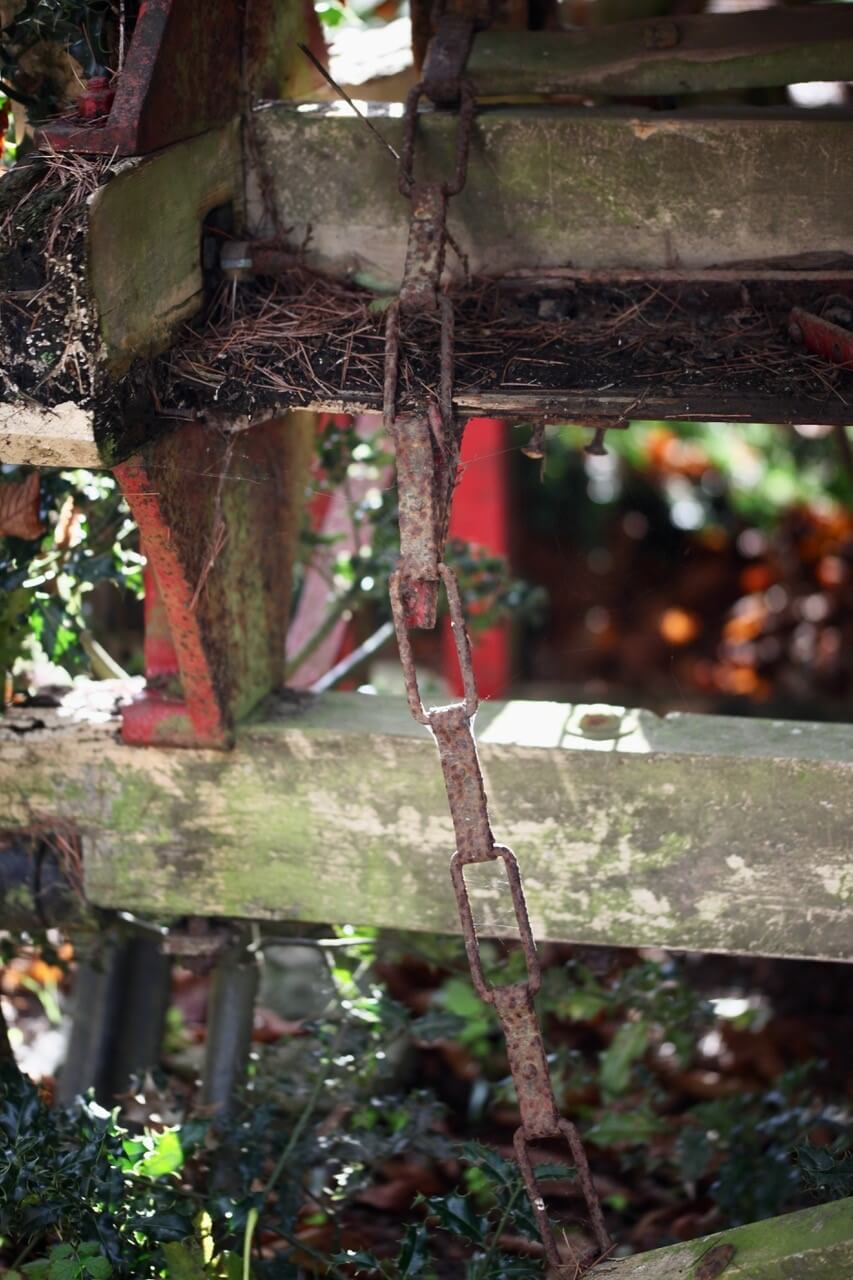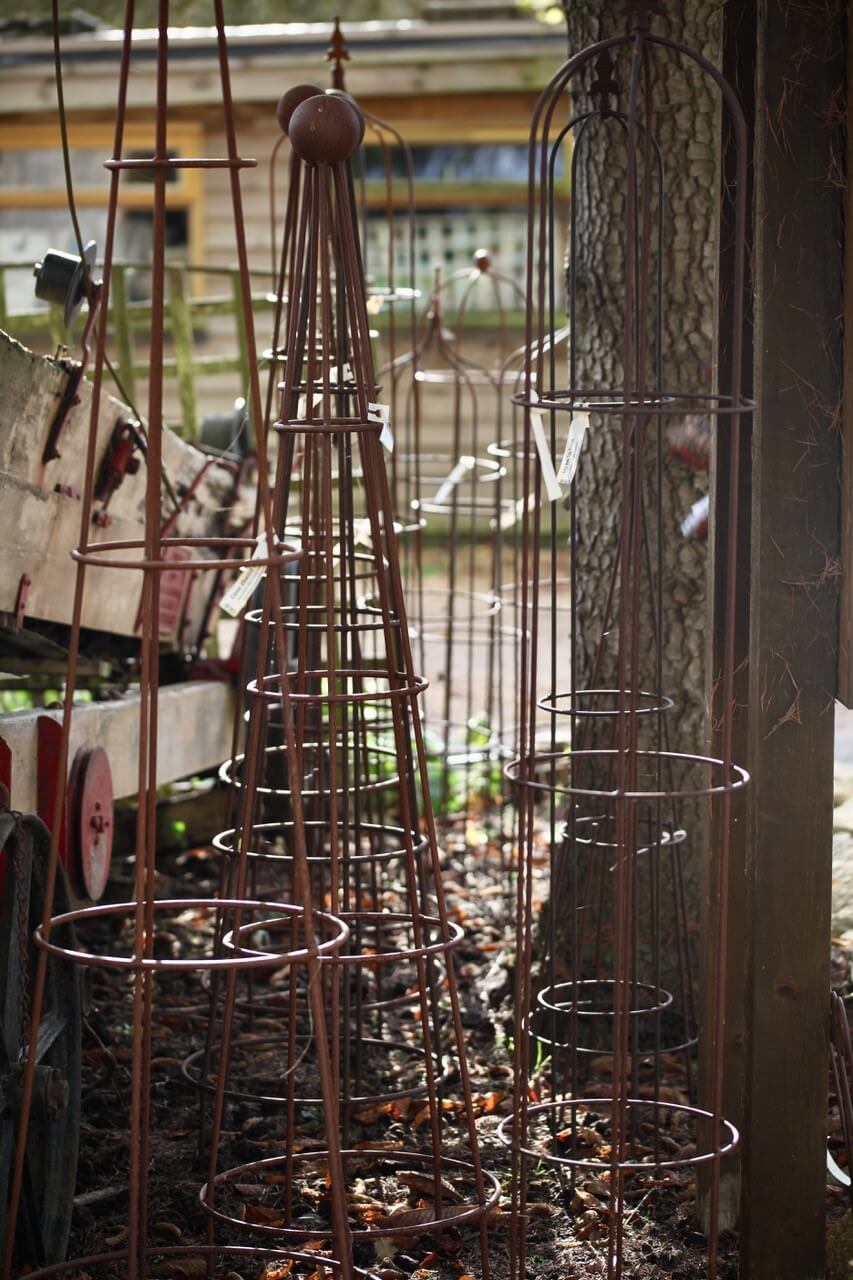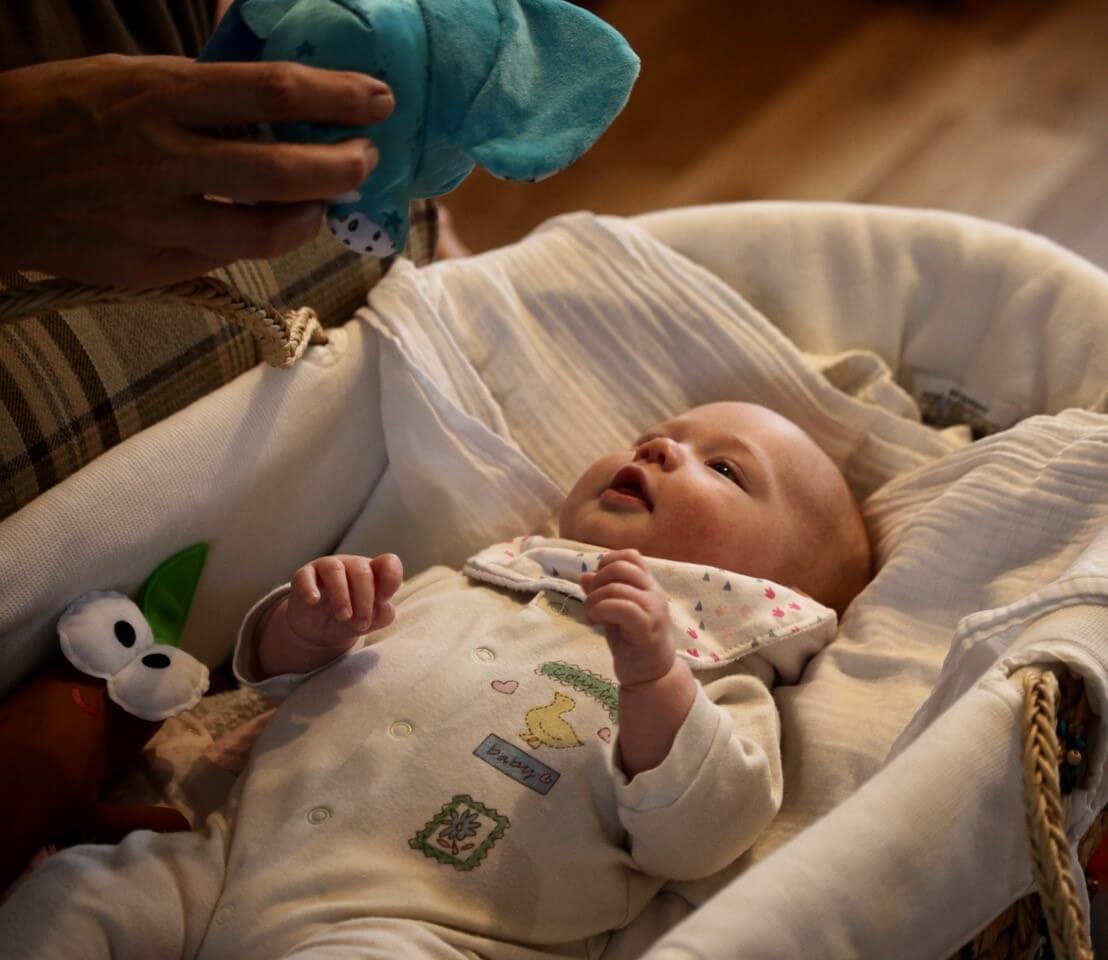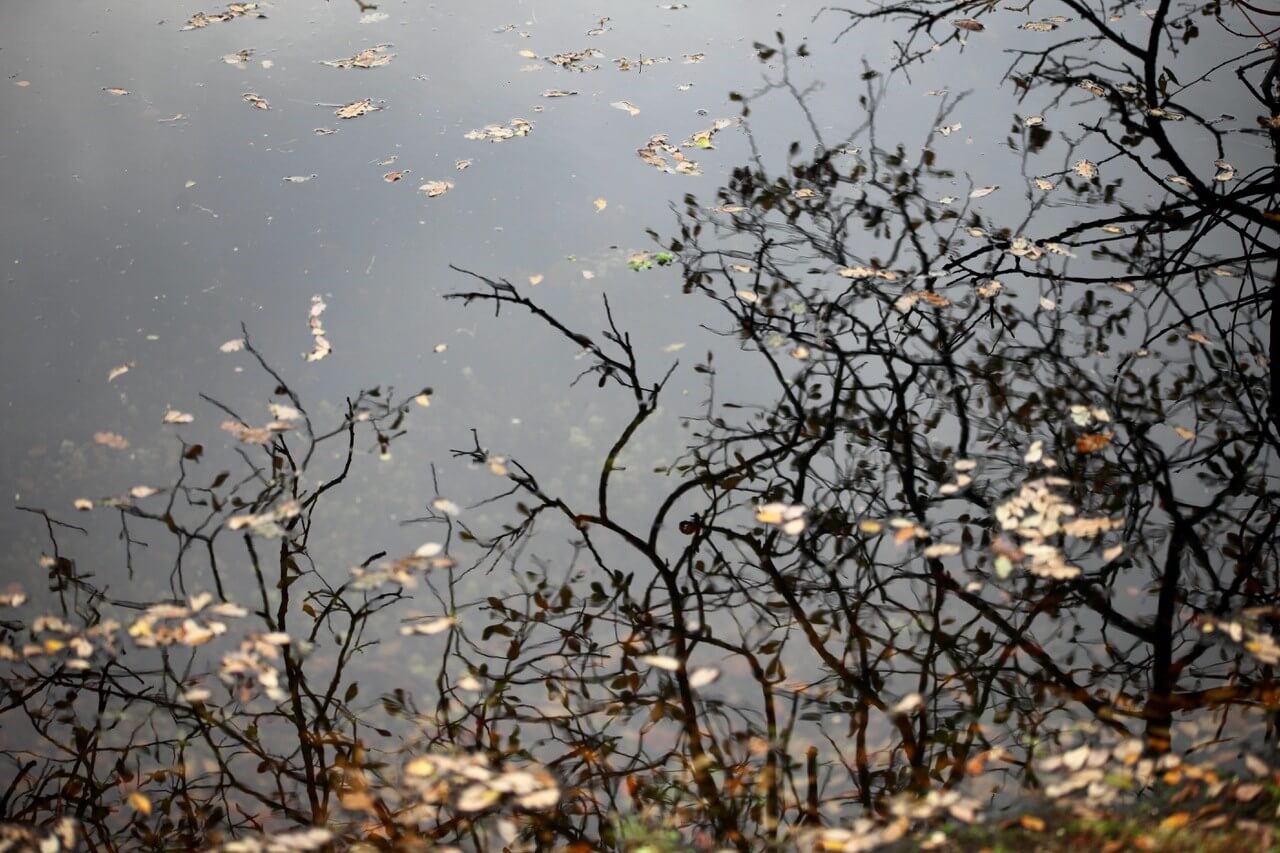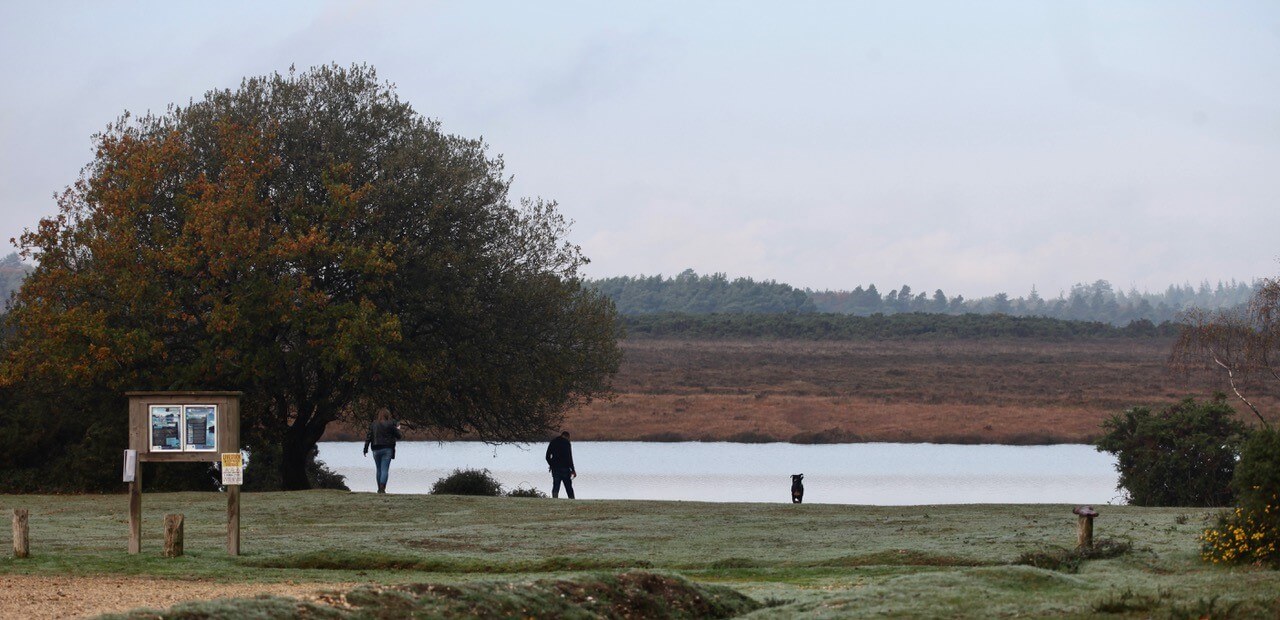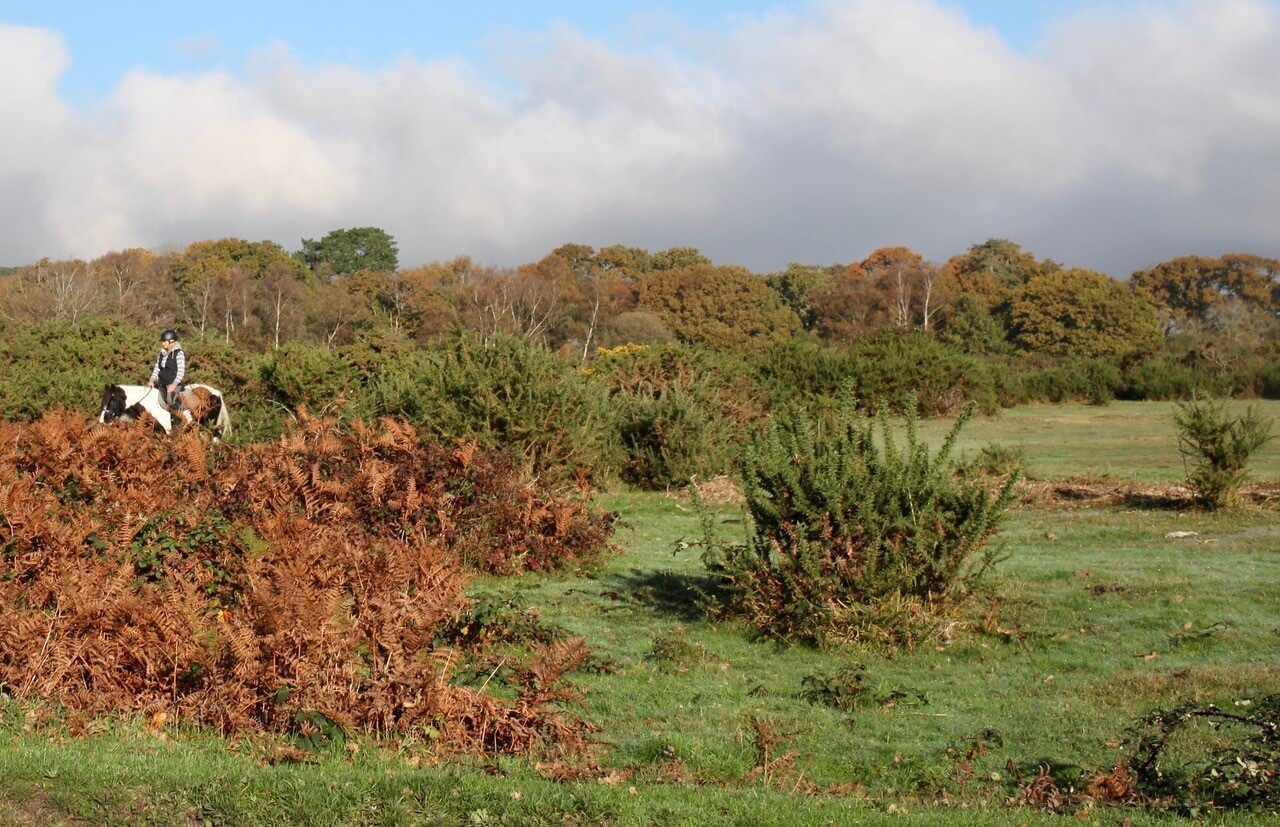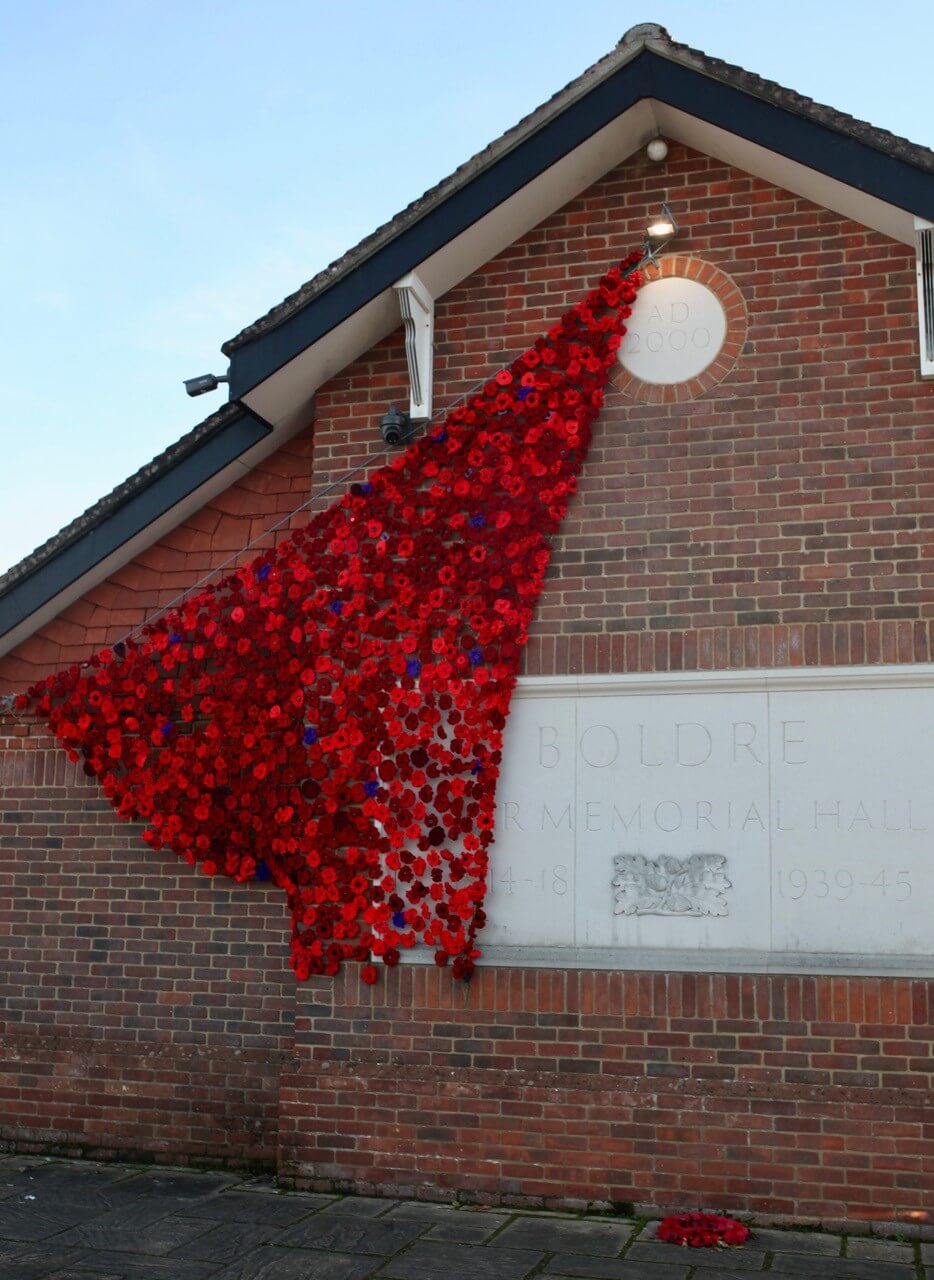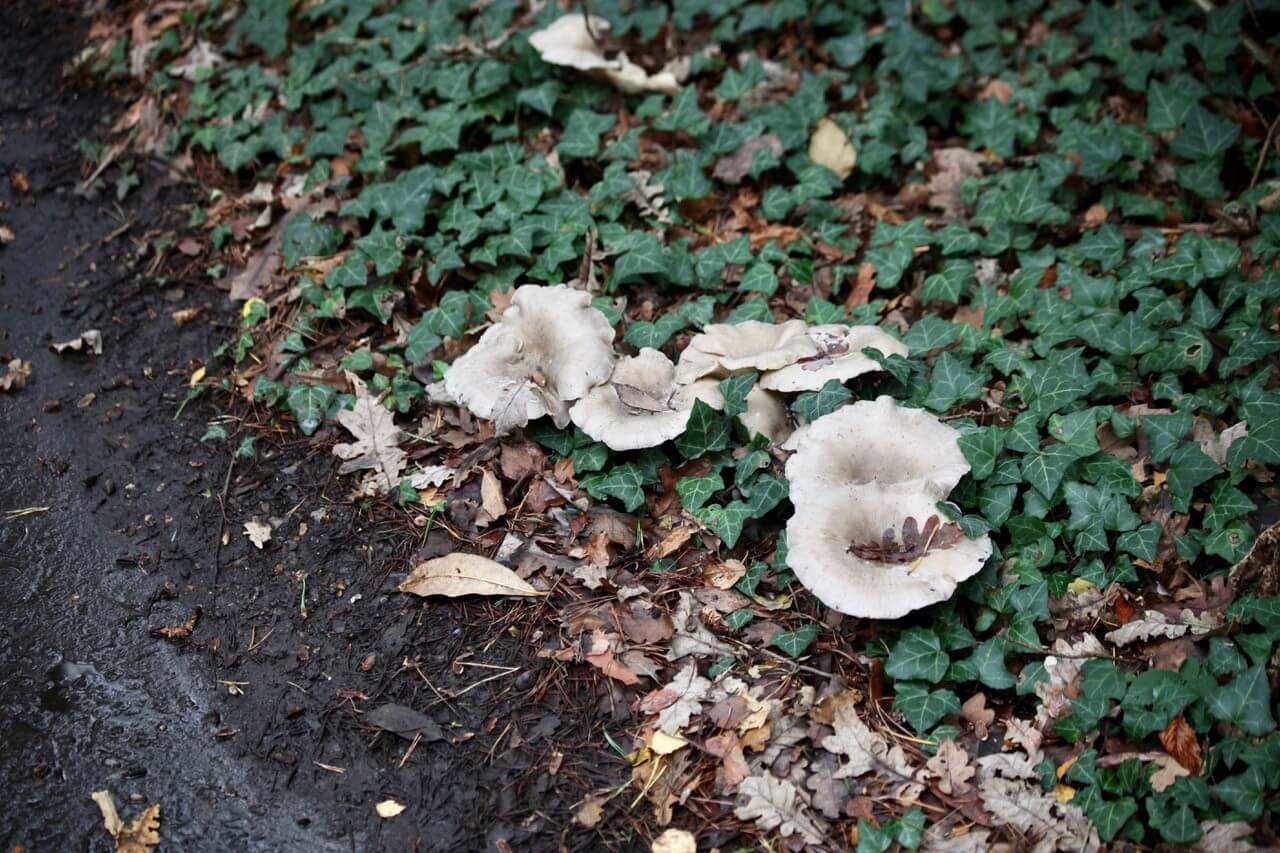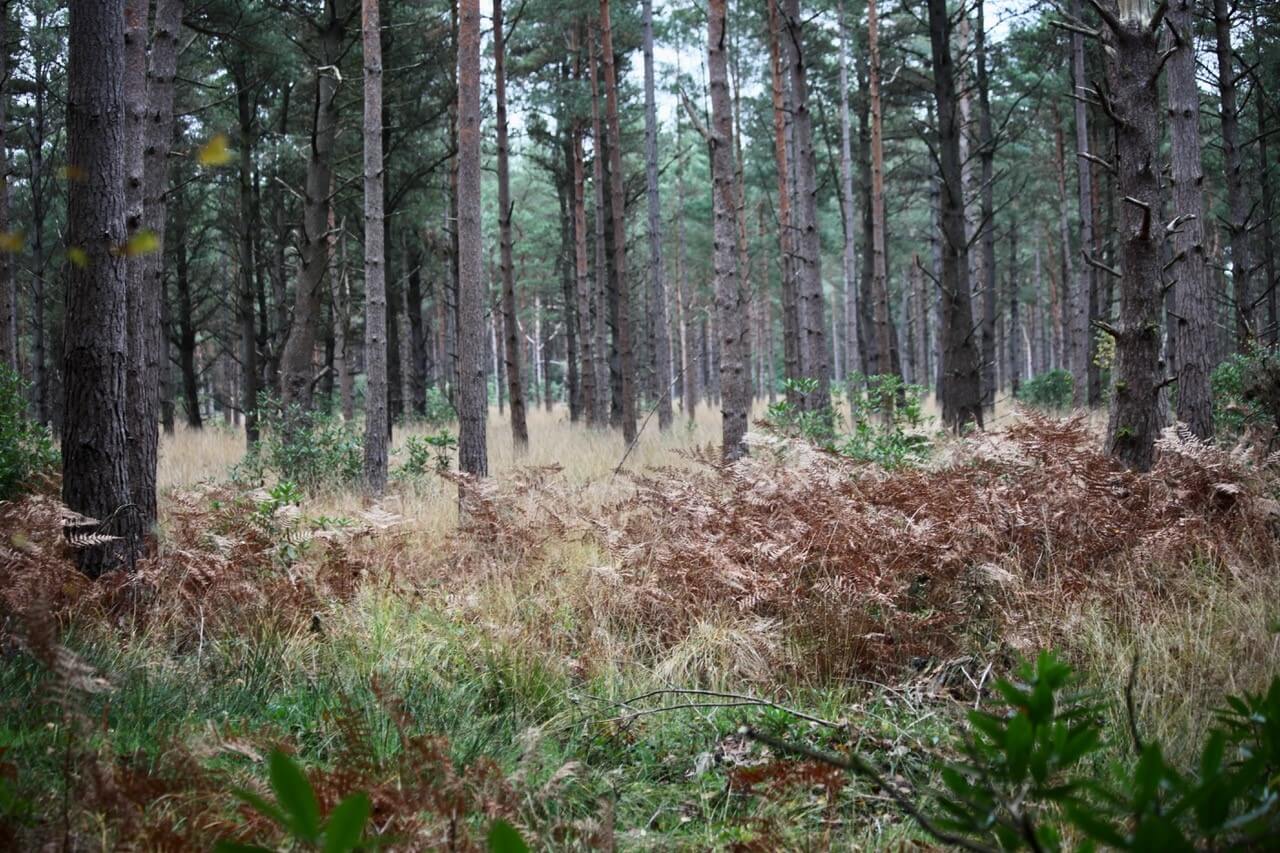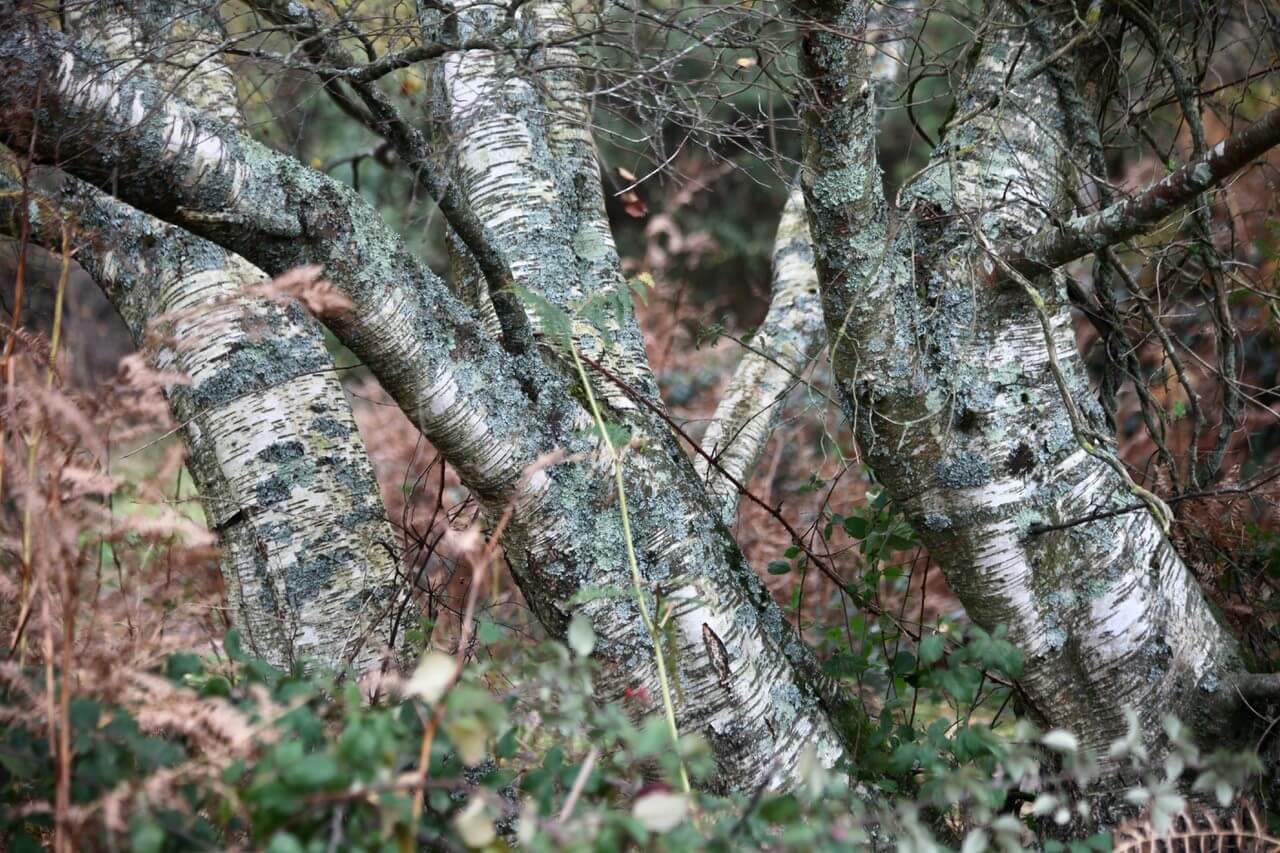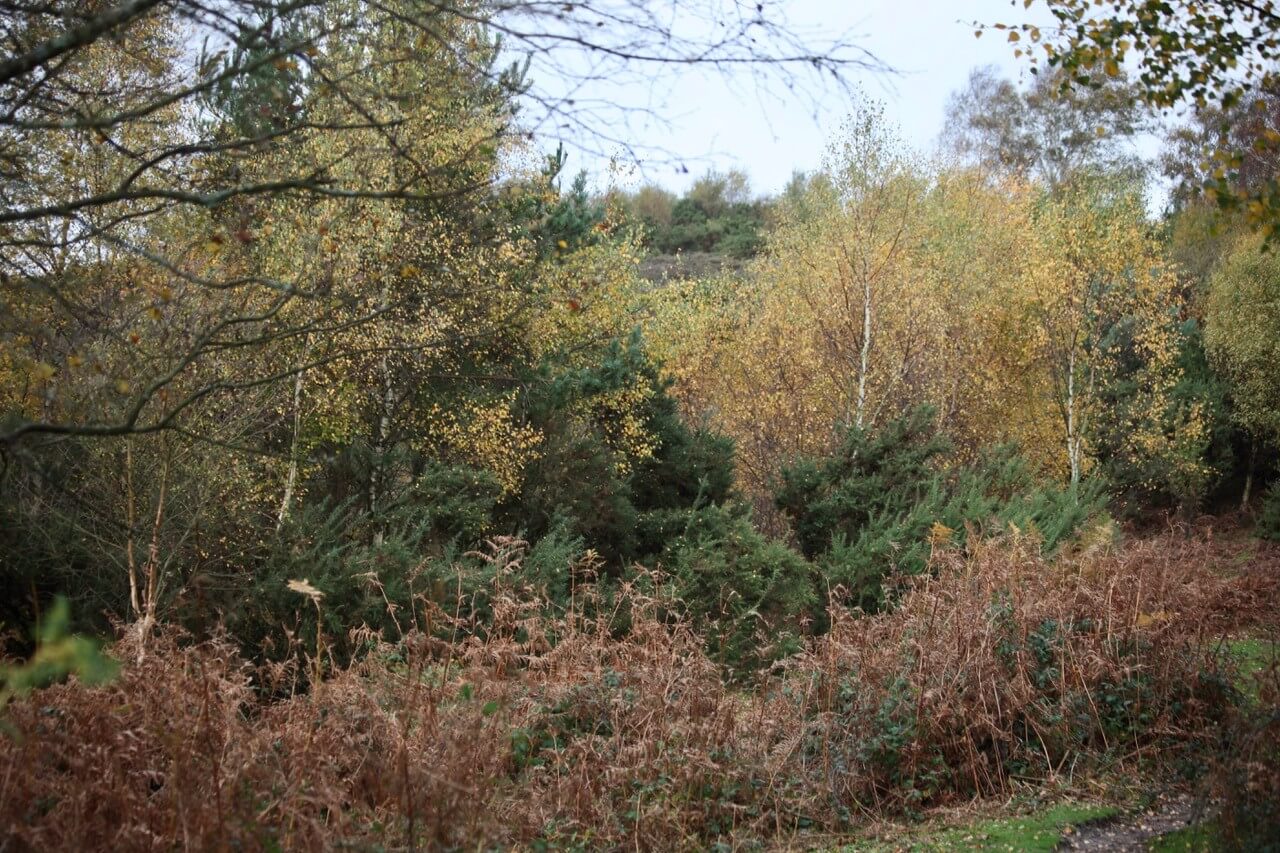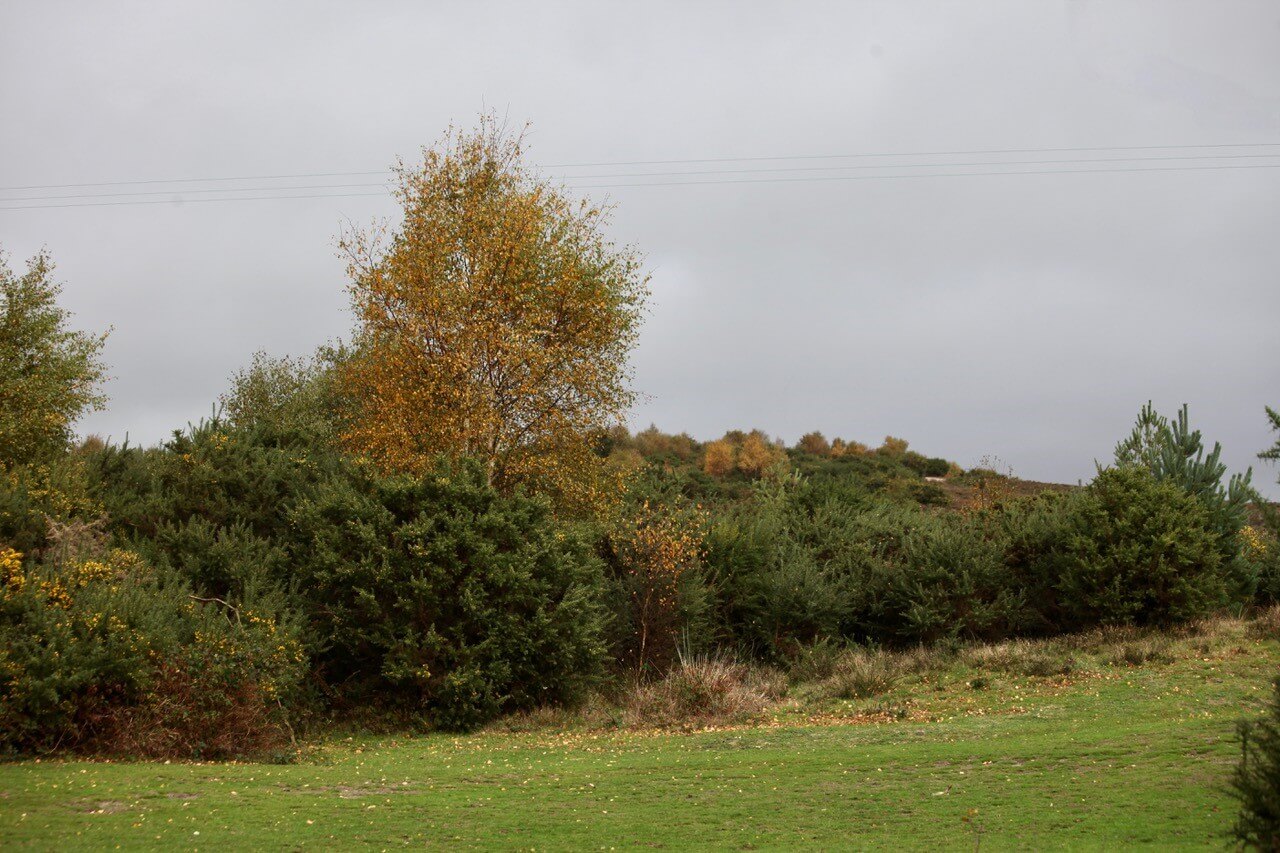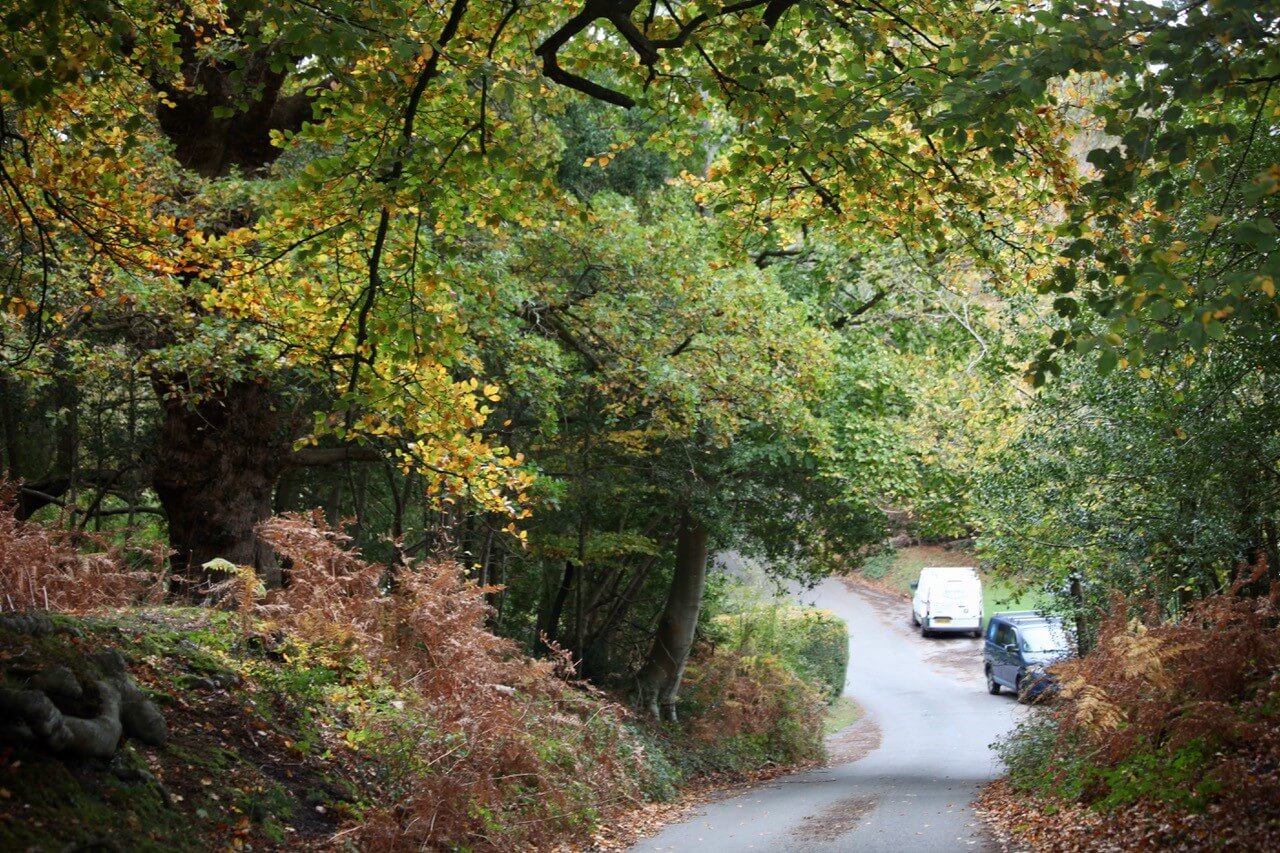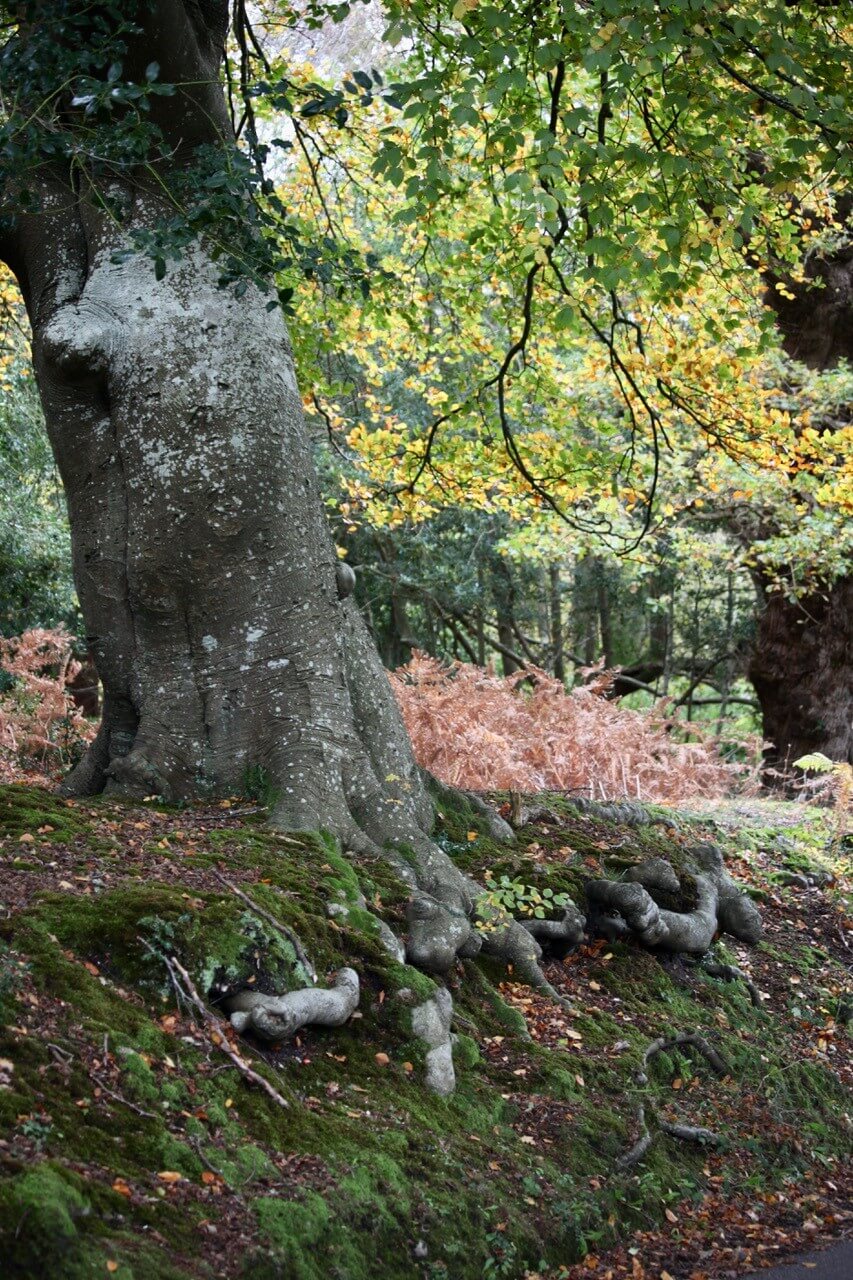We had intended to photograph Beechern wood on our forest drive today. This has been one of our regular trips.
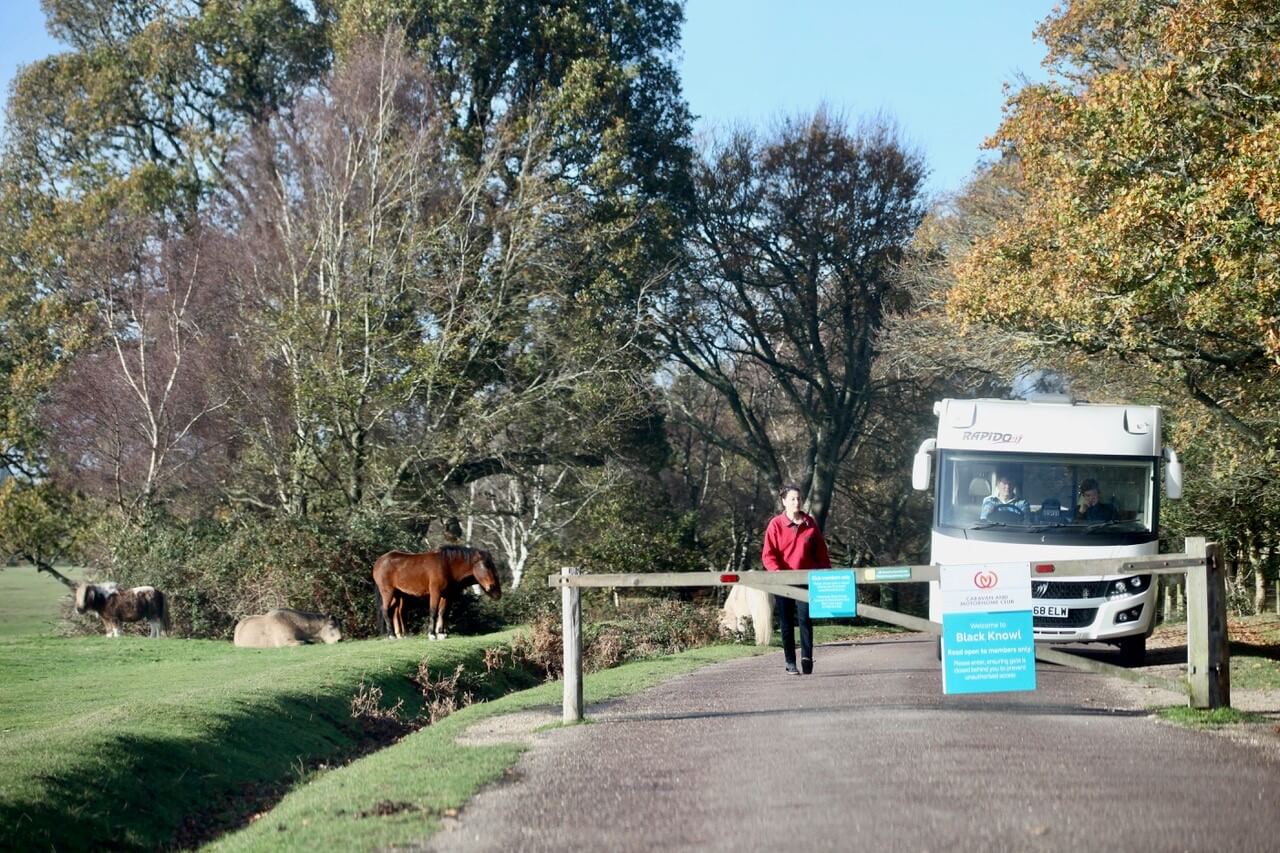
It was a shock to find a locked gate across the road forbidding access to non-members of the Caravan Site at the far end. The woman approaching the Forestry Commission gate had left the camper van and opened it for the driver. Who, I wondered, owned the road from which I have produced many photographs of woodland, ponies, and Ober Water.
We diverted to Whitemoor Pond, over which stretches this

branch with flaking bark;
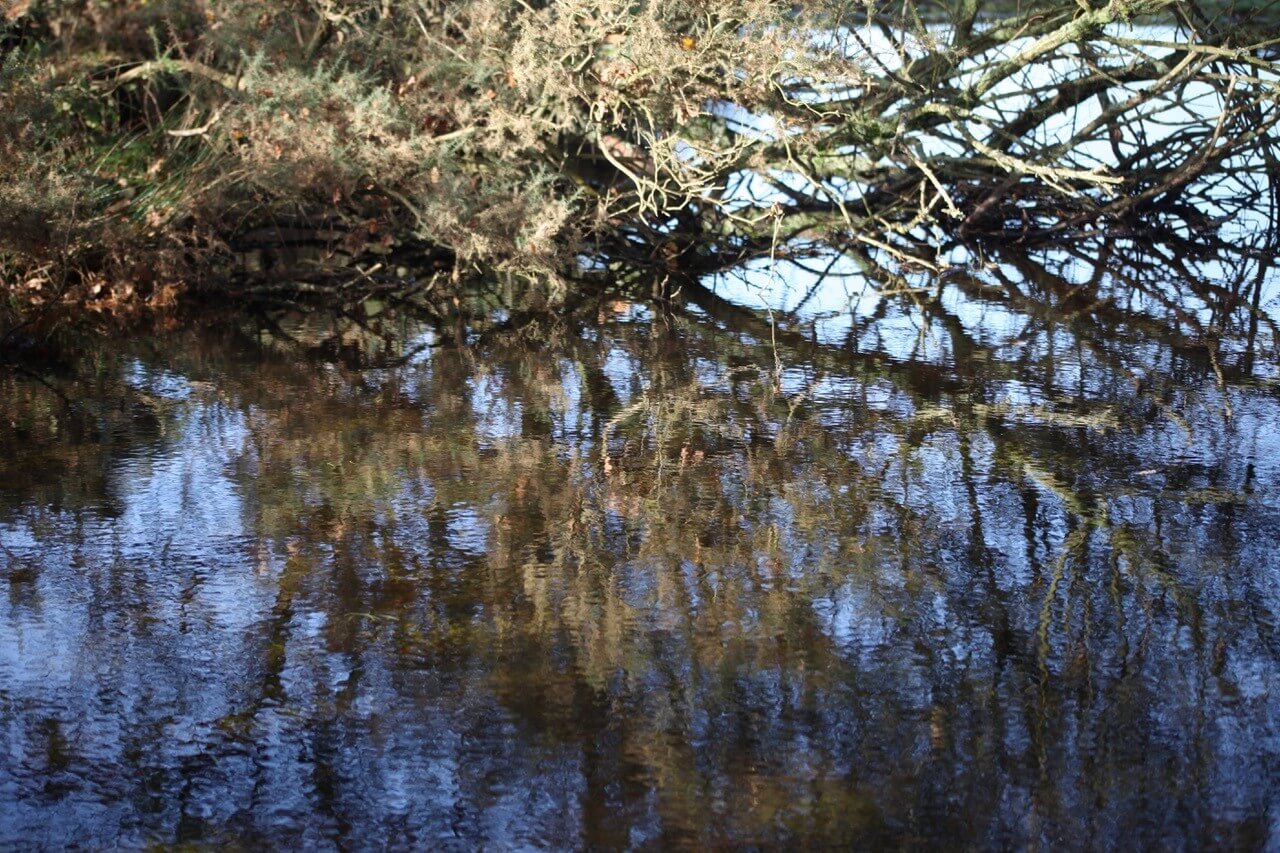
a number of trees were reflected on the shimmering surface
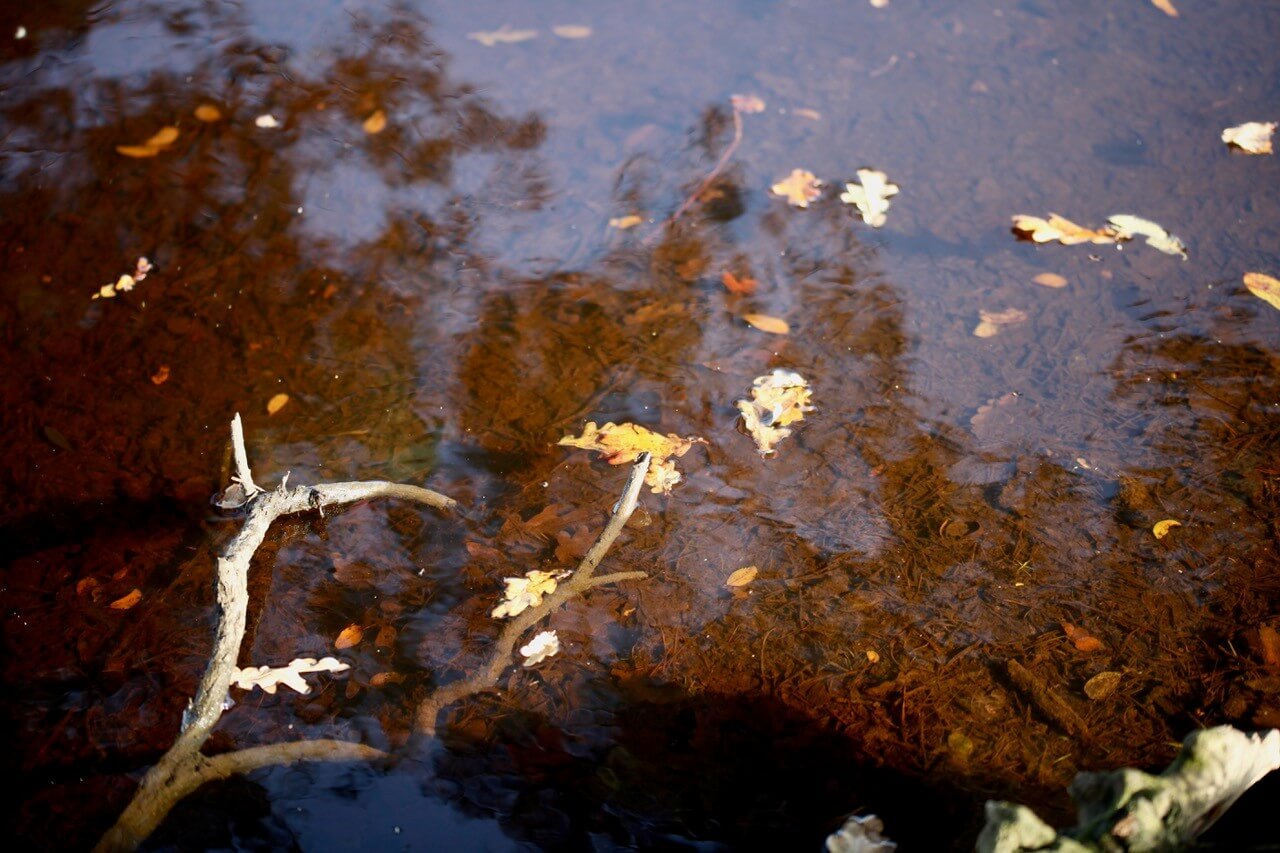
on which fallen leaves float above the clearly visible bed.
From there we drove on to the Rhinefield Ornamental Drive along which I took

a short walk amongst others along the now soggy footpath.

Although it wasn’t at all cold, most were wrapped up, and this gentleman clearly need to raise his collar.

This friendly family were very pleased with this photograph showing their dog really straining at the leash. I could not resist asking who was taking who for a walk.

Fallen leaves clustered at the roots of trees,

even of long-dead stumps.

At Wimbledon College, we were once taught by an art master who told us that trees were never just brown. These trunks were obviously what he meant.

We are now recognising so many fallen giants in the forest that we are able to follow their journey back to the soil from which they sprung. We passed this one a few years ago when it had just been snapped by fierce winds and quickly sawn and removed from the road. Its constituents will probably outlive ours.
Over recent months my library has been taken over by items destined for charity shops and the Council Recycling Depot. This has been a losing battle as further goods have appeared as fast as we declutter – one of the consequences of an increased household with many relatives being keen to bring gifts. Now Christmas items are being added at a rate of knots. This afternoon Jackie and I cleared and organised the space so that I can once again reach individual volumes.
This evening we dined on tasty fish cakes: haddock for me, cod for Jackie, and salmon for Flo; crunchy carrots and tender cauliflower leaves; the Culinary Queen’s piquant cauliflower cheese and colourful savoury rice, accompanied by the same beverages as yesterday.
